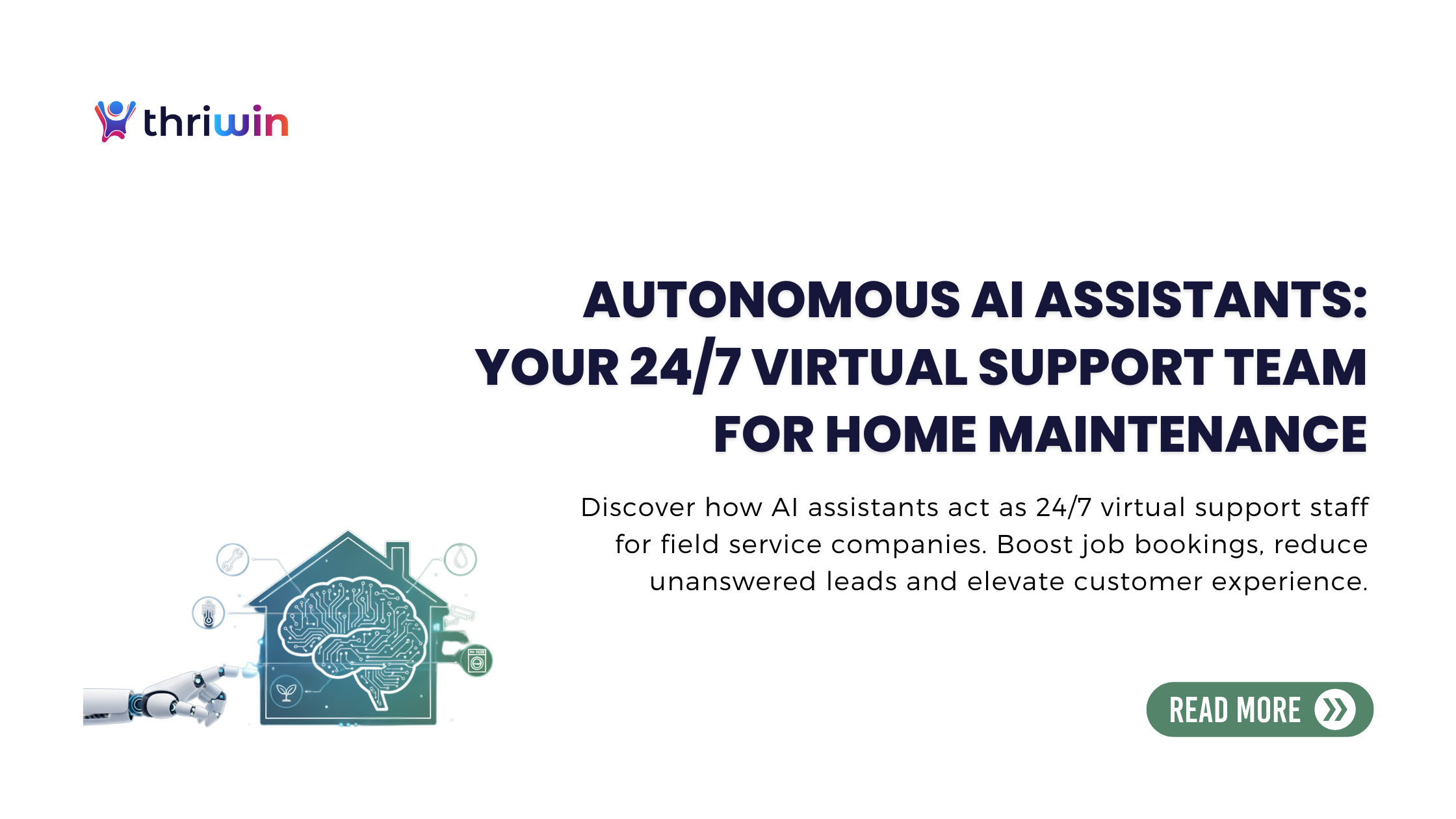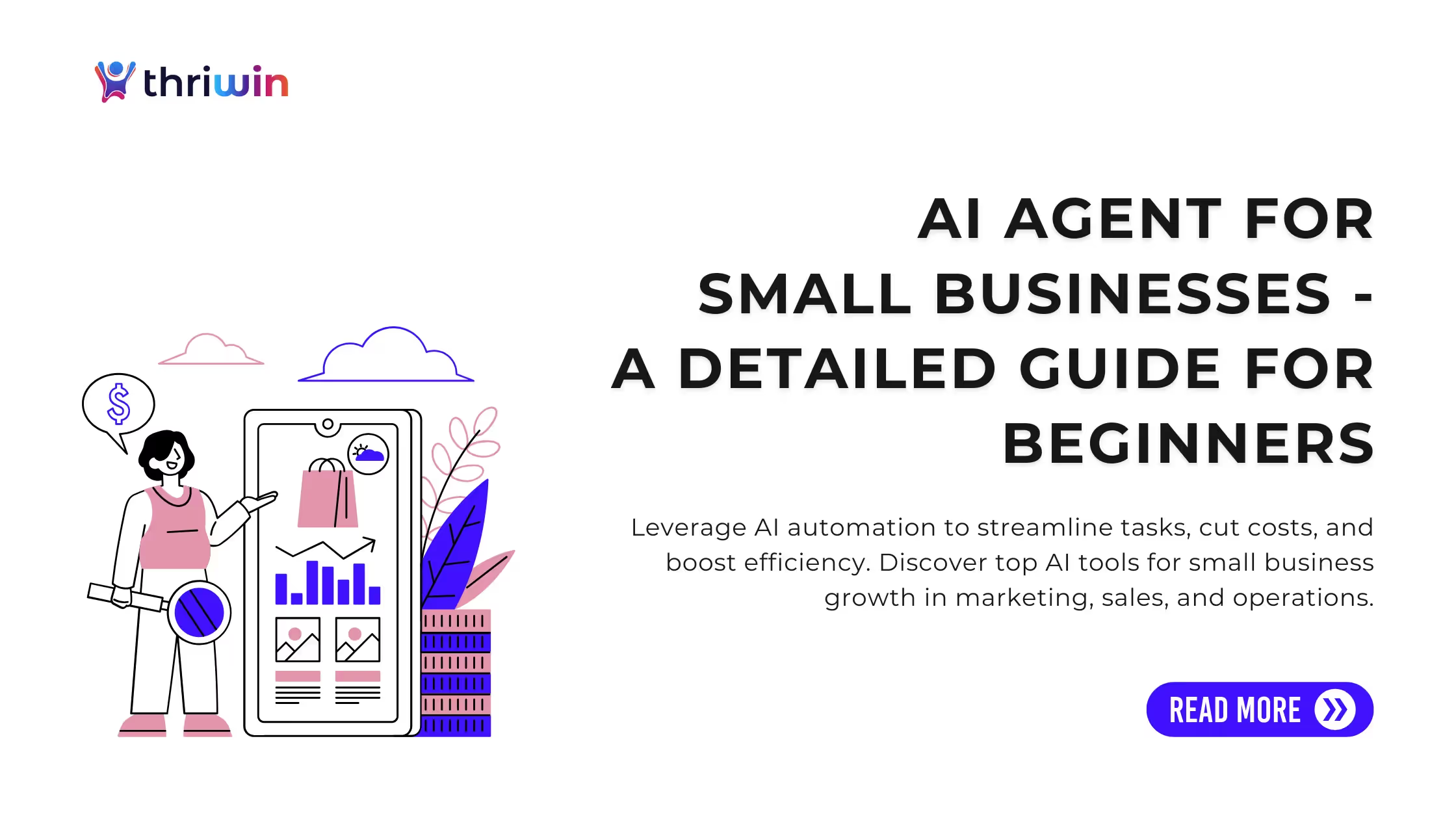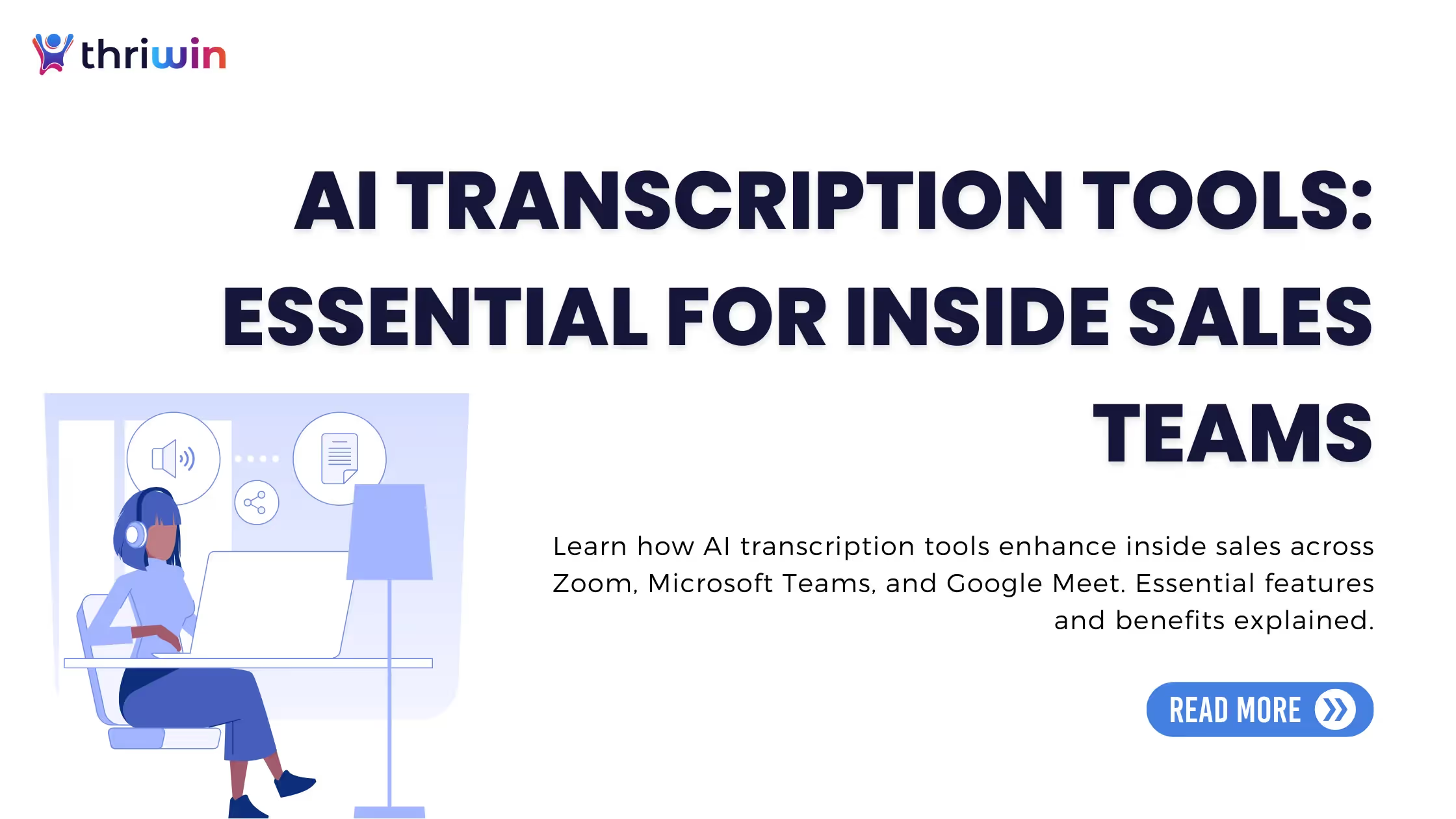In one decisive stroke, OpenAI has reset the entire landscape of enterprise AI in India. By offering its advanced language models for free, the company has sent a clear, undeniable signal: The foundational AI "brain" - the capability to reason and generate text - is now a commodity. This democratization of intelligence is a powerful catalyst, but it leaves businesses with a critical, new challenge. If everyone has access to the same raw intelligence, where does the competitive advantage lie? The value no longer resides in the passive "Brain in a Jar." The true strategic race in India has begun, shifting focus from mere content generation to Agentic AI - specialized, autonomous systems that can harness that free intelligence to observe, plan, and take decisive action across your entire business. This is the era of the AI Agent, and at Thriwin, we've been building a specialized vehicle to use this free engine.
The Catalyst and the Commodity
OpenAI’s strategic decision to offer its advanced language models, such as the powerful ChatGPT Go, for free in India has generated global headlines. On the surface, it’s a gesture that democratizes access to advanced intelligence for 1.4 billion people - a digital land grab of unprecedented scale. But for those of us deeply embedded in the enterprise AI landscape, this is not just a commercial move; it is a market-defining catalyst with profound implications.
This isn’t about access anymore. This move is a clear, definitive signal that the foundational Large Language Model (LLM) - the "brain" - is rapidly becoming a commodity.
The "raw material" of advanced intelligence - the ability to generate text, translate languages, and reason complex scenarios - is now virtually accessible to everyone, from a solo developer in Bengaluru to the largest enterprise in Mumbai. If everyone has access to the same high-caliber intelligence, that intelligence ceases to be a competitive differentiator.
This fantastic democratization of AI creates an immediate, new, and far more valuable problem for businesses to solve. The strategic imperative shifts instantly from access to application.
At Thriwin, we have been building for this exact moment. The race is no longer for the brain; it is for the specialized, autonomous system that can harness that free brain to execute business outcomes. The race is now for the Agent.
Section 1: The "Brain in a Jar" Problem: The Generative Dead End
To understand the shift, we must first understand the fundamental limitation of the tool OpenAI just commoditized: the raw LLM.
The Passive Genius
A powerful, generalized Large Language Model is best described as a "Brain in a Jar." It possesses incredible intelligence, memory, and reasoning capacity. If you prompt it, it can write a flawless email, draft a project plan, or explain complex physics concepts.
However, a brain in a jar is fundamentally passive. It sits, waiting. It is purely generative - it creates content based on a text prompt, but it cannot act on its own volition. It has no hands to interact with the world, no eyes to observe business systems, and no objective function to drive outcomes.
This passive state presents an immediate and painful roadblock for businesses seeking real Return on Investment (ROI) from AI:

The Automation Ceiling
For months, businesses have been captivated by Generative AI’s ability to handle tasks like content creation and basic chatbots. But they have consistently hit an automation ceiling. That ceiling is the point where the LLM needs to take an external action - like logging into a third-party application, making a decision based on real-time data, or switching communication channels.
A raw LLM waits for a prompt. A business needs an Agent that takes action, autonomously and persistently, to move the needle on revenue or efficiency.
Section 2: The Core Technological Shift: From Generative to Agentic AI
The democratization of the LLM signals the start of the Agentic AI era. This is not just a feature update; it is a new architectural layer that transforms static intelligence into active workforce capability.
Agentic AI systems function by mimicking the core loop of human cognition and action - a cycle of Observe, Plan, and Act (O-P-A).
1. Observation (O): The Eyes and Ears
An autonomous Agent must be contextually aware. It can’t operate solely on the text it is fed. It must be integrated with the business environment.
- Sensors and APIs: The Agent connects to the outside world - the CRM, the ERP, the email server, the WhatsApp Business API, and internal databases.
- Contextual Awareness: This allows the Agent to see the current state: “This lead (observed in CRM) has not responded to an email (observed in email API) but visited the pricing page twice in the last hour (observed via analytics API).”
2. Planning (P): Decomposing the Goal
The core LLM - the newly commoditized "Brain" - is activated here. Its task is to take a high-level goal (e.g., “Convert this warm lead”) and decompose it into a sequence of actionable steps.
- Reasoning and Tool Selection: The Agent reasons: “To convert the lead, I must send a time-sensitive offer. I need the 'Discount Generator Tool' and the 'WhatsApp Sender Tool.'”
- Multi-Step Planning: This is a sequential, logical process: 1) Generate a 10% discount code using the tool. 2) Draft a personalized message. 3) Send the message via the WhatsApp channel (since that is the lead's preferred channel of last interaction). 4) Log the action in the CRM.
3. Action (A): Execution in the Real World
This is where the Agent truly separates itself from the Generative LLM. It uses its Tools - which are essentially code and API endpoints - to execute the plan autonomously.
- An Agent does not merely suggest a price change; it uses the Price_Update_API to change the price in the inventory system.
- An Agent does not merely draft a meeting request; it uses the Calendar_API to book the meeting directly.
The convergence of free, powerful LLMs (the Brain) and sophisticated integration platforms (the Body and Tools) makes the Agent the single most valuable enterprise asset of the next decade.
Why India is the Perfect Agentic Testbed
The Indian enterprise landscape demands Agents more than any other market. The sheer complexity - the high volume of interactions, the necessity of multi-channel coherence (from email to hyper-local WhatsApp use), and the diversity of vernacular languages - makes simple chatbot solutions insufficient. Agentic AI is required to provide the high-touch personalization demanded by Indian consumers, but at the scale and cost-efficiency required by Indian businesses.
Section 3: The New Race: Agents That Drive ROI, Not Just Answers
The new benchmark for AI success has shifted from the subjective ("How human-like is the response?") to the objective ("What concrete business outcome did the Agent deliver?"). The ROI will flow to the businesses that move fastest to deploy autonomous Agents across their most valuable processes.
🚀 Use Case 1: Inbound Lead Qualification (The Funnel Agent)
In sales, the first five minutes are everything. A passive chatbot loses the lead; an Agent captures them.
- The Scenario: A new lead (a mid-market company in Pune) visits your pricing page after downloading a whitepaper.
- Agentic Execution:
- Observation: The Agent instantly queries the website analytics and CRM. (Finding: Lead is a high-fit ICP, viewed the "Enterprise" page, but is showing high exit intent.)
- Planning: The Agent determines the immediate goal is to secure a meeting. The plan is to intercept via WhatsApp/Chat with a high-value, contextual offer.
- Action: The Agent initiates a chat: "Welcome, Team XYZ! We see you were checking the 'Enterprise' plan. We can immediately offer a quick 10-minute audit of your current tech stack to show you the 3 areas where we could drive 15% efficiency - are you free right now?" If the lead says yes, the Agent immediately uses the human Sales Rep's Calendar API Tool to book the time and block the calendar.
- The Resulting ROI: The Agent dramatically shortens the Time-to-Meeting (TTM) and increases the percentage of Sales Qualified Leads (SQLs) by focusing human attention only on qualified, scheduled opportunities.
📞 Use Case 2: Multi-Channel Customer Nurturing (The Coherence Agent)
Customer journeys are no longer linear. They start on Instagram, move to email, and often conclude on a voice call. Maintaining context is critical for brand trust.
- The Scenario: A customer calls the support line complaining about a "sky-high water bill." The Agent handles the call, then the customer hangs up and immediately messages on WhatsApp.
- Agentic Execution:
- Observation: The Agent transcribes the voice call, analyzes the sentiment (distress), and maps the intent (water usage audit). It logs this interaction in the customer's unified Memory profile.
- Planning: The goal is to provide a proactive solution on the customer’s preferred non-voice channel. The plan is to send a detailed, personalized report.
- Action: When the customer messages on WhatsApp, the Agent immediately replies, not with a generic FAQ, but with: "Thank you for your call just now. To help you with your water bill concerns, I've run an audit using your historical data (Tool: Billing API) and compiled a PDF on projected savings (Tool: Document Generator). I've just sent it to your registered email."
- The Resulting ROI: Higher Customer Satisfaction (CSAT), reduced agent churn, and a reduction in repeat contacts (the customer is resolved end-to-end without human intervention).
🛠️ Use Case 3: Proactive Operational Management (The Field Service Agent)
The most impactful Agents work completely behind the scenes, integrating complex enterprise resource planning (ERP) functions.
- The Scenario: A major client's hardware is scheduled for routine maintenance in 60 days, but new data shows an anomaly.
- Agentic Execution:
- Observation: The Agent monitors the client's IoT sensors (Tool: IoT Data Stream API) and notices a slight but continuous temperature rise. It checks the nearest technician’s current route and inventory (Tool: ERP and Dispatch API).
- Planning: The Agent determines that proactive, immediate service is required to prevent an expensive failure. The plan is to intercept the nearest technician and adjust their next appointment.
- Action: The Agent sends an instant, priority notification to Technician A's mobile device (Tool: Mobile Notification API), updating their route plan, providing a new job checklist specific to the temperature anomaly, and automatically drafting a personalized, pre-emptive apology/explanation email to the customer of the rescheduled appointment.
- The Resulting ROI: Massive reduction in expensive, emergency service calls, optimal technician route efficiency, and superior preventative maintenance leading to customer retention.
Section 4: Thriwin’s Advantage: The Agency Layer Built for India
OpenAI has generously given the world the engine. The race is now to see who can build the most effective, specialized vehicle - the AI Agent - that leverages that engine to conquer the market.
At Thriwin, we focus entirely on the Agency Layer.
We are not selling a better LLM; we are selling the autonomous workforce that uses the best LLMs available. Our proprietary framework is designed to solve the three core challenges of Agent deployment:
- Secure, Custom Tooling: We specialize in securely connecting the LLM Brain to the specific, complex, and often legacy systems that Indian enterprises rely on (CRMs, payment gateways, custom ERPs). Our Agents don't just talk; they integrate, update, and transact.
- Coherent, Persistent Memory: We build Agentic memory systems that ensure the AI maintains a single, coherent context of the customer across all channels - voice, WhatsApp, email, and internal tickets. This eliminates the frustrating, repetitive onboarding required by siloed chatbots.
- Outcome-Driven Design: Every Agent we deploy is designed with a singular focus on an ROI metric - be it lead-to-conversion rate, customer lifetime value (CLV), or reduction in operational costs. We focus on results, not just impressive chatter.
The strategic imperative is clear: Stop licensing the commodity, and start deploying the capability. The time to think about Generative AI as a novelty tool is over. The era of Agentic AI as the core operational mechanism has begun.
Conclusion: The Path Forward
The day OpenAI released its advanced model for free in India, it signaled the end of one era and the launch of the next. The competitive landscape is now irrevocably defined: The AI Brain is a commodity; the AI Agent is the competitive edge.
The companies that succeed in the next five years will be the ones that pivot fastest from Generative Intelligence (creating content) to Agentic Intelligence (executing outcomes). The competitive advantage will no longer flow to those with the deepest pockets for data centers, but to those with the smartest, most effective autonomous agents running their mission-critical processes.
The future of business efficiency and customer engagement in India will be defined by the Agency Layer.
🤝 Let's Discuss:
Now that the "AI brain" is becoming a free, accessible commodity for every business in India, what is the first end-to-end business process you believe will be - and should be - fully handed over to autonomous AI Agents?
❓ Frequently Asked Questions (FAQs)
1. What does it mean when experts say Large Language Models (LLMs) are becoming "commoditized"?
It means the basic intelligence and language processing capabilities of foundational AI models are becoming widely accessible, often at a low cost or for free. While these models are powerful, their ubiquity means that the sheer ability to generate text or answer general questions is no longer a unique competitive edge for businesses.
2. What is the fundamental difference between Generative AI and Agentic AI?
Generative AI focuses on creating content (text, images, code) based on a prompt. It is fundamentally a passive tool. Agentic AI focuses on taking autonomous action to achieve a defined goal. It uses the LLM as a "brain" but is equipped with "tools" (API access) to observe, plan multi-step workflows, and execute tasks in the real world, such as updating databases or sending emails.
3. Why is the ability to "take action" so crucial for business AI adoption?
For AI to provide meaningful Return on Investment (ROI), it must integrate into and complete end-to-end business processes. Most vital business tasks (like processing an order, scheduling a meeting, or resolving a customer issue) require interacting with external systems (CRM, ERP, calendar). Agentic AI provides this crucial capability, turning static intelligence into an active, automated workforce.
4. What are the key components required to build a functional Agentic AI system?
A robust Agentic AI system typically needs three core components:
- The Brain (LLM): The reasoning and planning core.
- Tools: Secure, reliable connections (APIs) to external business systems.
- Memory: A persistent database to store context and past interaction history, allowing the Agent to maintain continuity and coherence across tasks and sessions.
5. What makes this shift to Agentic AI particularly relevant for rapidly developing markets like India?
In markets like India, businesses deal with massive scale, high customer engagement across multiple digital channels (including hyper-local apps like WhatsApp), and complex operational requirements. Agentic AI offers the only scalable way to manage this complexity, providing the high-touch, personalized service customers demand while achieving the necessary efficiency and cost reduction for rapid growth.
%201.svg)






